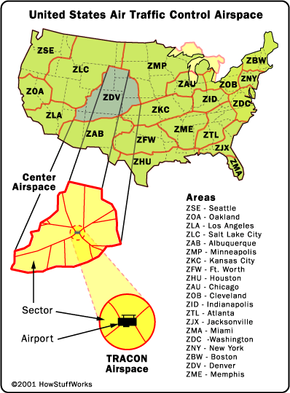Some Known Incorrect Statements About Safety Network
This is called army development as well as is achieved by coordinating the operation of surrounding signals (https://codepen.io/s4fetynetw0rk/pen/NWLqpQG). Signal control is most generally accomplished by operating nearby signals at the exact same cycle length, with a pre-determined countered between the begin of the cycle at one intersection and also the beginning of the cycle at the following.
The cycle length, split, as well as offset might need to alter throughout the day as traffic volumes alter. Safety traffic signs. Controllers, therefore, enable the user to establish numerous collections of these standard sychronisation timing criteria. Each such set is referred to as a timing strategy or timing pattern, as well as one timing strategy or timing pattern is in operation at any kind of given time.
The smart Trick of Safety Network That Nobody is Discussing
Website traffic signal controllers readily available today can be categorized as interval controllers (likewise called pretimed) or stage controllers (additionally called activated). The former enable the customer to divide the cycle into any type of variety of periods, with the period of each interval being established by the customer. The user after that specifies which outcome circuits are activated throughout which periods.
The cycle size equals the sum of the interval durations, and all intervals are timed sequentially. The user can also define a start-of-cycle countered for signal control. The interval periods, outcome meanings, cycle length, and balance out can all be differed from one pattern to an additional, as well as consequently can be differed throughout the day.
If the signal is coordinated, the customer also defines a split time for every phase, and a start-of-cycle balanced out. The individual assigns a phase to a set of suitable car as well as pedestrian motions. If coordinated, the split times for all stages in a ring need to sum to the cycle size.
Our Safety Network Ideas
Stages designated to the exact same ring time sequentially, but rings time concurrently. If the controller is making use of two rings, two stages can be timing simultaneously as well as separately. Stage controllers make use of barriers or stage concurrency groups to define problems between phases in various tings. Within a concurrency team (between 2 barriers) the stages in different rings can time individually, yet all rings should go across the barrier (transfer to a different stage concurrency team) all at once.
From one pattern to the following, the user may differ the cycle size, countered, split, and phase sequence. Phase control is particularly well suited to actuated control of normal crossways, specifically those with protected left turn movements. 2 activated left turn phases on the same street can time separately, with state the westbound turn phase obtaining less time than the eastbound in one cycle, and the opposite happening in the next cycle.
Each stage in a stage controller can be operated either pretimed (taken care of time) or activated. The National Electric Manufacturers Organization (NEMA) TS 2 common specifies minimum functional standards for both interval and also stage controllers. Most modern-day controllers satisfy most or every one of these minimum needs and most controllers also offer additional capability not yet standard.
The Greatest Guide To Safety Network
Such connections might top article be permanent to a remote master or computer system, or momentary to a notebook computer made use of by area personnel. Ethernet is increasingly being used rather than serial interactions. As special serial port may be used to interact with in-cabinet tools in the case of a serial-bus cabinet (see NEMA TS 2 as well as ATC areas below).
If a malfunction is detected, the MMU immediately places the signal in an all-red flashing state, overriding the results of the controller. Modern controllers can notice this problem as well as report the malfunction state to a master or main computer. Modern controllers offer the adhering to 3 alternate techniques of establishing which pattern or strategy to operate: Internal time-of-day routine - the user sets up a timetable that informs the controller when to change the pattern or plan, based upon the day of the week and time of the day.
If the controller loses communications with the resource of pattern commands, it can instantly change to using its interior time-of-day pattern option schedule - https://www.nairaland.com/6490712/signal-fastest-growing-app-world/48#120976318. The exact same communications link is generally used to get condition info from the controller, as well as to enable remote changes to controller parameters. It is additionally feasible for the individual to by hand secure a controller into a particular pattern, such that any one of the above pattern choices is disregarded.
Getting My Safety Network To Work


Before controllers had interior clocks, this was usually achieved by attaching the controllers to a master system using the hardwire adjoin approach defined over. When each cycle, among the input cords changes its state for a 2nd or two (called a pulse), therefore signifying the commencement of the history cycle to all connected controllers simultaneously.

Use of this hardwire adjoin technique is decreasing, in favor of time base control. Today, controllers have biological rhythms capable of keeping fairly accurate time for at least several days. All controllers in a sychronisation group can be configured to make use of the exact same time of day (claim twelve o'clock at night) as the reference factor for balanced out calculation.
This is called time base sychronisation. At some point, however, the controller's clock will wander and require to be reset to basic time. Clocks can be reset making use of any one of the complying with strategies: Handbook - periodically, an individual mosts likely to the controller in the area and resets the moment according to a precisely established watch or various other resource of conventional time (e.
See This Report about Safety Network
This approach is not preferred as it is laborious, error-prone, and based on neglect. Depending on the version of controller, operationally considerable drift can require manual reset after only several weeks of procedure. Hardwire pulse - a master system pulses a hardwire input to the controller at a pre-defined time of day.